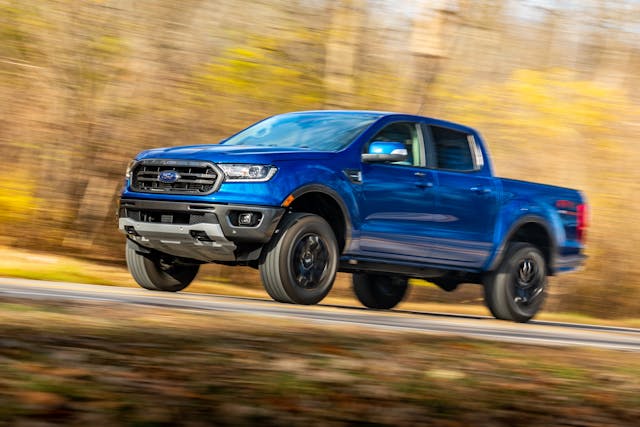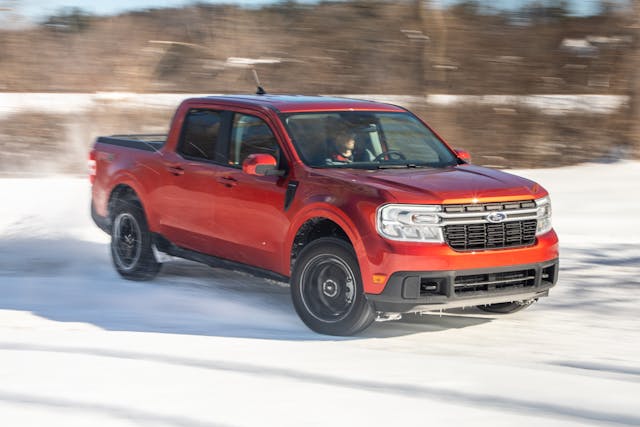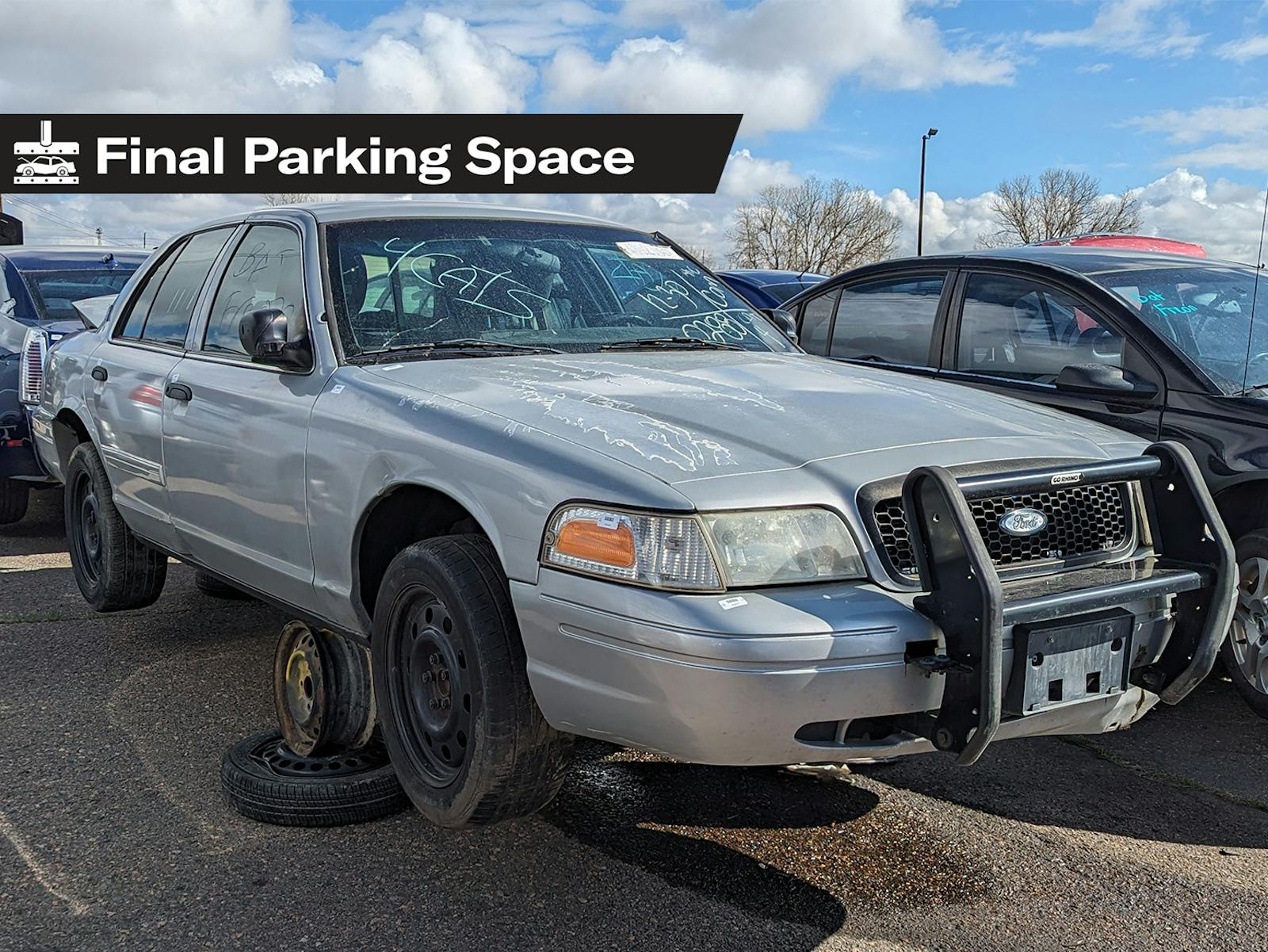How regulations made the small-pickup segment a dinosaur park
One of Toyota’s top U.S. execs, Jack Hollis, told the trade rag Automotive News recently that the company has “continued to look” at the small-truck segment, acknowledging that Toyota has “continued to look for a long time” even while others have acted. The Ford Maverick and Hyundai Santa Cruz are two new entries in a once-sleepy corner of the market, and together they racked up over 50,000 sales in the first six months of 2022. Meanwhile, Toyota and Nissan, which practically invented the compact pickup in the 1970s and forged empires from their popularity in the ’80s and ’90s, seem to be dozing.
Those who look fondly on the truly compact pickups of yore, the Hardbodies and Hiluxes and LUVs, have suffered through a long drought. After Ford killed off the Ranger in 2012, the segment went into hibernation. Its main entries, the U.S.-built Toyota Tacoma and Nissan Frontier, were left to molder from lack of competition, even as small-truck production soared overseas—especially in Thailand, where several automakers build new compact pickups for foreign markets (the U.S. is walled off from these by a 25 percent tariff on pickups).

The Ranger returned in 2019 to join the Chevy Colorado/GMC Canyon as “mid-sizers,” while the 2022 Frontier is all-new and the Tacoma finally gets an overhaul for 2024. Hollis promises that it won’t grow, but nor will it shrink to anything approaching what many consider to be peak Tacoma, those of the late ’90s and early 2000s. Those trucks, very hot items today in the resale market, were nearly a foot shorter, about 8 inches narrower, and roughly a thousand pounds lighter than the current Tacoma. Anybody wanting a pickup with that degree of garageability (and fuel economy) has only the Maverick or Santa Cruz as options. And those are not the body-on-frame workhorses of olden days but effectively four-door, car-based, crossover SUVs with exposed cargo areas.
Why can’t we have new little trucks? One answer: the corporate average fuel economy (CAFE) standard. It has several inputs to its complex calculation, including sales of a particular model as well as the model’s footprint. When the formulas were rewritten in a 2008 revamp of CAFE, domestic automakers argued that they were unfairly penalized because their product mix tended toward large trucks (which are safer, they noted), especially the kinds of essential work trucks favored by the heartland. The argument, however patriotic, disguised a growing truth in 2008: Trucks were increasingly purchased as family vehicles. Nonetheless, light trucks and especially the higher footprint classes were let off the hook with lower fuel economy standards.
Seeing a loophole, automakers rushed to redesign more products to meet the incredibly broad definition of “light truck” specified in Title 49 of the Code of Federal Regulations. Today, vehicles ranging from the wee Honda HR-V to the Subaru Outback to traditional pickups like the F-150 are all classified as light trucks, the sales of which have consequently swelled to three-quarters of the U.S. light vehicle market.

The footprint rule endures, effectively discouraging carmakers from building body-on-frame trucks in smaller sizes owing to the cost and difficulty of meeting tougher mileage standards. Being car-based, the lighter Maverick and Santa Cruz (both circa 3800 pounds) skate through with four-cylinder engines and hybrid options. They’ll even tow up to 4000 and 5000 pounds, respectively. But buyers don’t have the kinds of choices in cabs and bed lengths that they once did with compact pickups.
Lovers of small trucks must pin their hopes on hybridization and electrification, two technologies that would make it easier for brands to reenter the segment. However, the prices of such trucks likely wouldn’t land far enough under those of full-size trucks to prevent most buyers from just stepping up to a larger offering. In the future, if you can even get a small pickup, you’ll have to pay through the nose for it.
This article first appeared in Hagerty Drivers Club magazine. Click here to subscribe and join the club.
Check out the Hagerty Media homepage so you don’t miss a single story, or better yet, bookmark it.



A tale of four Datsun/Nissan pickup trucks:
1972 521: standard cab, 172″ overall, six foot bed
1981 720: King (extended) Cab, 181″ overall, six foot bed
1993 D21: King Cab, 191″ overall, six foot bed
2007 Frontier: King Cab, 206″ overall, six foot bed
While I like the extended cab, I’m not enthralled with the 25 inch growth from the ’81; the gain in bed width is minimal and the length is the same. I don’t need or want a full sized truck; wish I could find a smaller extended cab truck than what I’m currently driving…and one with a manual transmission!
I, too, like the extended cab. I drive a 2011 Ranger supercab 4×4 that I bought new. I pulled the rear “seats” as they are worthless. There’s enough room for groceries, etc on the inside. The box is big enough to haul whatever I need and the 4.0L V6 will pull a utility trailer easily. I’ve owned three Rangers and it looks like this one is going to have to last me until something similar comes along. The four door offerings out there now are ugly, as though the box was an afterthought. They’ve become so high in the rear you cannot reach over the side to access contents. This is one segment I wish would have never evolved. If it ain’t broke…
I had a 2003 Tacoma pick up, it was a great truck but a bit small for what I wanted to do.
My favorite truck is a 1977 Mazda Rotary Engine pick up. Very hard to find now and expensive.
Maybe Toyota could offer a regular cab (not access cab) short box Tacoma in 2024. That could get them a step closer to the desirable peak Tacoma size.
I have a gen 2 Ford Lightning and while it’s lowered from the factory (and lowered a lil more by me) it’s crazy to see how MASSIVE trucks have gotten. I was bagging up leaves in the fall last year (yes my svt sees light duty hauling stuff to the compost) and my neighbor who used to have a 2003 F150 pulls up in a new Ford Ranger. That thing seems bigger than my truck, at least the proportions, the interior, not so much. Obvious the Lightning is a single cab but I believe it’s still considered to be a full size truck.
I’m still driving my 1997 Toyota T100, extra-cab 4×4. Best small-mid size truck ever.